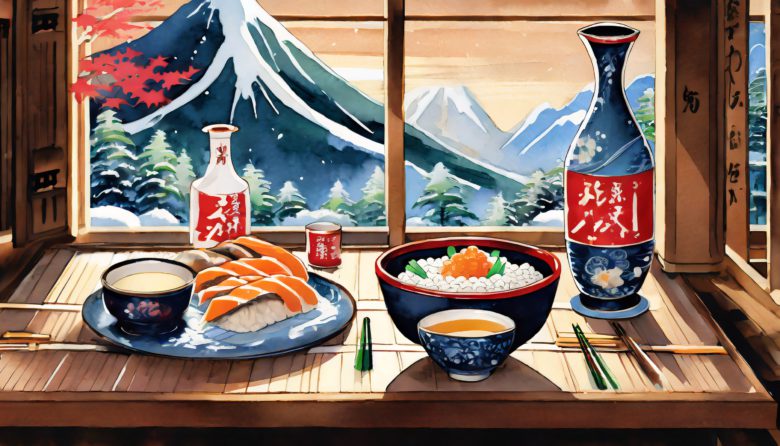Tokyo’s winter season is filled with heartwarming events and delicious cuisine, making it a special time for sake enthusiasts. January 2024 in Tokyo offers an array of sake-related events, perfectly complemented with traditional culinary experiences.
Events on January

Oden & Local Sake Festival 2024
- Location: Ueno Park Fountain Plaza
- Dates: January 18-19 and 20-21
- Experience: Savor a variety of oden dishes from across Japan paired with carefully selected local sakes. This festival offers a warm escape from the winter chill and a chance to indulge in Japan’s rich culinary heritage.
Winter Sake & Local Delicacies Festival 2024
- Location: Yoyogi Park
- Dates: January 26-28
- Experience: Enjoy the finest sakes brewed by local artisans and seasonal dishes. It’s an opportunity to savor traditional Japanese flavors amidst the winter setting of Tokyo.
Pairing Sake with Traditional Cuisine

During Tokyo’s long winter nights, pairing sake with traditional cuisine is an unmissable experience.
This gastronomic combination offers a deep dive into Japanese food culture.
For example, sushi, with its delicate flavors, is elevated when paired with the refreshing taste of sake.
Dry Junmai sake or aromatic Ginjo sake enhances the flavor of the fish and the taste of the rice.
Similarly, thinly sliced sashimi finds a perfect match in Junmai Ginjo or Daiginjo sake.
These sakes enhance the subtle flavors of sashimi without overpowering them.
Hot pot dishes, a winter staple, epitomize the essence of Japanese communal dining.
Adding a slightly rich Junmai or Honjozo sake to the mix deepens the pot’s flavor and warms the body.
The pairing of yakitori with sake is also exceptional. The simple yet rich flavors of grilled chicken are complemented by dry or semi-dry sake, accentuating the taste and bringing out the smoky aroma.
For tempura, with its crispy texture, a light and refreshing Junmai Ginjo or medium-bodied sake is recommended, balancing the oiliness and enhancing the enjoyment of its texture.
Deep Roots of Sake Culture

Sake is deeply embedded in Japanese history and culture, playing a significant role in many festivals and rituals. In Shinto religious ceremonies, sake is offered to the gods as a symbol of respect and gratitude.
This practice is evident in various rituals, such as New Year’s shrine visits and weddings, where sake signifies wishes for happiness and prosperity.
The symbolic “Kagami Biraki” ceremony, where a sake barrel shaped like a kagami mochi is broken open with a wooden mallet, is performed at celebrations and festivals to pray for good fortune and abundance.
Toasting with sake at weddings and banquets is common, symbolizing communal harmony and happiness.
During seasonal events like New Year and Setsubun, families and friends gather to drink sake, ushering in a year of health and happiness.
Sake also plays a vital role in regional festivals, where communities come together post-celebrations to enjoy sake, thereby strengthening communal bonds. Each region in Japan has its unique sake brewing technique, influenced by local climate, water, and rice varieties, reflecting the area’s culture and history.
In contemporary times, sake’s pairing with Japanese cuisine has gained international attention, further promoting Japan’s food culture globally. Drinking sake is not just about enjoying a delicious beverage; it connects one to the deep cultural roots of Japan.
Enjoying winter in Tokyo with sake and traditional cuisine is more than just a culinary experience; it’s a journey through Japan’s rich cultural landscape.


